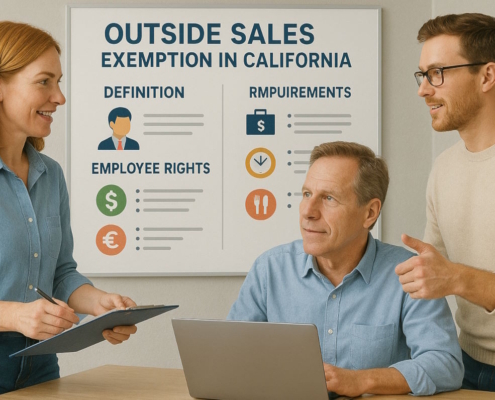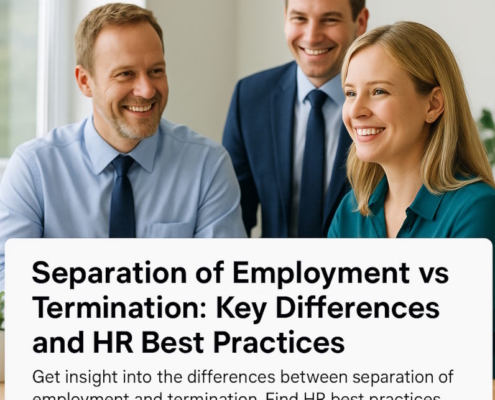Introduction
California is unquestionably in the best five states in terms of coverage out of the fifty states that comprise the union. Whether you like it or not, they are making news with their actions. The rules they enact on labor constitute one topic that is especially noteworthy.
For businesses nationwide, paying mobile workers can now be complex and unclear. Workers want their real costs to be reimbursed. Employers want to be able to see exactly what they are paying for. Additionally, Section 2802 of the California Labor Code has broad implications.
Section 2802 of the California Labor Code
For many years, companies in California have sought openness and employees have demanded equitable compensation. There has been a cycle. And the state’s renowned, complex labor regulations were born out of this cycle. The finest illustration of this? Section 2802 of the California Labor Code. According to this regulation, businesses are required to pay workers back for all of the costs they incur when conducting business.
When employers disregard this law, they face the repercussions. This involves the possibility of being exposed to messy, employee-initiated lawsuits, which usually include extra costs and interest. To give a concrete example, the California Supreme Court decided in Gattuso vs. Harte-Hanks Shoppers that workers should be compensated for all of their expenses, including those related to their cars.
Mileage Reimbursement in California
Automobile expenses are explicitly included under California Labor Code 2802. Mileage reimbursement is a prime example. Employees in a wide variety of sectors and organizations of all sizes must be able to drive to work. They receive fleet cars from some of these businesses. Others mandate that workers use their own cars for work-related purposes. According to California’s Labor Law, employers are required to compensate their workers for such business usage.
State versus Federal Mileage Reimbursement
The IRS releases the mileage rate annually (and in extreme cases, more than once). This rate is used by employers to make sure that employee reimbursements are tax-free. Furthermore, California maintains the same IRS mileage rate as all other states, which may surprise you. They do not determine their individual rate. Many other states lack labor regulations that require employers to pay workers back, in contrast to California. However, we are beginning to notice that shift.
Why California?
One crucial point to make? California is not the only state with these kinds of labor rules. California is the state with the highest population, and a lot of its citizens take part in political activities. Over the years, California has stepped up to create laws related to subjects such as cybersecurity and the environment. California is a role model for other states because of these factors.
Inaccurate Reimbursements Cost Businesses Money
In recent years, California companies have been forced to pay settlements totaling millions of dollars. When it was discovered that RadioShack’s policy—which only compensated mobile workers provided they submitted their costs in accordance with business protocol—was in violation of Labor Code 2802, the corporation paid a 4.5-million-dollar settlement. Almost 6,000 employees of Crossmark, Inc., who alleged they were not adequately compensated for travel & business-related expenses, agreed to a $1 million settlement.
A similar action has been filed against Toys “R” Us for allegedly failing to reimburse workers for transportation expenses, outside meetings (a minimum of seven annually), and other expenses. As part of nine combined class action cases filed in federal court in California, Walgreens reportedly paid $23 million, $1.5 million of the total for breaching California Labor Code 2802.
Why More States Are Starting to Do the Same
Do not be misled; this is not a “California problem.” Inaccurate or unreasonable employee reimbursements have serious repercussions. Because of this, other U.S. states have already started to adopt California Labor Code 2802 as their model. Companies in Massachusetts are required to pay workers back for any extra time and costs incurred if they report to work somewhere other than their usual place of employment.
According to New Hampshire’s labor code, employers are required to compensate workers for any costs that are deemed to be outside their pre-established budget. The labor terminology of North Dakota and South Dakota is similar to that of California in the Midwest.
Certain labor regulations in other jurisdictions, like Louisiana, do not precisely correspond to California Labor Code 2802. Nevertheless, there are some civil codes that appear to draw attention to certain parallels between them. According to Louisiana Civil Code 2298, a person who has unfairly benefited at another individual’s expense is required to pay that person back.
How much compensation is owed is based on how much one has become enriched or how poor the other has become, whichever is lower. In this case, the employee may be poor and the company wealthy in relation to repayment. For a considerable amount of time, and with good reason, academics have been drawing connections between California Labor Code 2802 with labor regulations in other states.
Additional Methods for Determining Mileage Reimbursement
What is the commonality among the lawsuits mentioned above? An appropriate automobile reimbursement technique might have easily prevented each of these. Employers have several alternatives when it comes to paying mobile staff for business miles. Some are more precise, some are simpler, and some are more inefficient. Car allowances, cents-per-mile, and variable and fixed rates are the most widely used approaches. Let’s quickly examine each of them, beginning with the one that might be the worst.
1. Driving Expenses
In theory, a business might have driving employees who spend a lot of money. They would just submit receipts for tolls, fuel, maintenance, and other expenses. But there are several reasons why this could turn into a nightmare. To begin with, the mobile worker must report all of those costs. Not many people will raise their hands in that manner. After that, someone needs to review all of those costs.
Lastly, businesses should pay for company-related usage, but there is no simple way to distinguish between personal and corporate use. Avoid using this strategy for numerous reasons. Don’t even remember to read about it.
2. Car Allowance
Car allowances remain a common choice due to their ease of use. Every month, businesses merely give their drivers a set amount. Additionally, that amount remains constant, which makes it simple for accounting to make plans for it as well. However, there is no relationship between these monthly stipends and the distance that people travel for employment. The IRS views automobile allowances as “additional income” due to this discrepancy. They are therefore taxed. Those taxes pile up if you’re not using an accountability plan.
3. Cents-per-mile
Under this program, which is also commonly referred to as mileage reimbursement, businesses give mobile workers certain cents for each mile. The IRS mileage rate we discussed previously tends to be the cents-per-mile reimbursement rate. That isn’t necessarily a good decision, though, for reasons we discuss here. The average number of miles driven and the size of the mobile workforce should be ideal. The program is really effective if your business is at the point of excellence. There are alternative solutions that will meet the requirements better if it doesn’t.
4. FAVR (Fixed & Variable Rate)
They are preferred by businesses for several reasons. It is a tax-free scheme, to start. Additionally, it is very flexible and relies on IRS methodology. Employers pay workers according to the variable and fixed expenses of driving. Taxes, insurance, depreciation, and other expenses are examples of fixed costs or expenses that don’t vary greatly. Maintenance and gasoline are examples of variable costs or expenses that fluctuate regularly.
These expenses are unique to each employee’s driving location while working with the correct vendor. The reimbursements are updated in accordance with changes in local costs. Because cost elements can be arranged within the IRS’s guidelines to produce tax-free reimbursements that satisfy a variety of business objectives, this flexibility makes it an excellent choice for businesses.
Maintaining Precise Mileage
How can your business properly compensate its workers? The framework is the car program you use, but an account of business mileage is necessary for correct reimbursements. Some businesses use manual mileage tracking, in which staff members manually enter the required data. Unfortunately, mileage fraud may result from using this option.
A mileage capture software is necessary for the most precise option. This makes it possible for workers to accurately log their mileage and submit them straight from their mobile devices. No more wasting time on paper trip logs. All mobile workers need to do is install the app and carry on with their day!
Additional Reimbursement Issues
California’s Assembly Bill 5 became operative in 2020. The definitions of workers and contractors were altered by this statute. A contract worker had to be regarded as an employee unless their employers could demonstrate three requirements. That might significantly affect the way some employees of the organization are reimbursed.
Bottom Line
Paying your mobile workers inaccurately or without cause can put your business at risk, usually in the form of expensive litigation (a few of which can cost up to seven figures). Companies should seek accurate and equitable car programs that will be advantageous in the future in order to reduce this danger.































